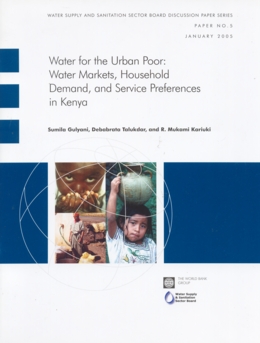|
 Compared with the non-poor, just how inadequately are the urban poor served by the public utilities and small-scale private water providers Based o a survey of 674 households, this paper examines current water use and unit costs in three Kenyan cities and also tests the willingness of the unconnected to pay for piped water, yard connections, or an improved water kiosk (standpipe) service. By examining water-use behavior of poor and non-poor households, this study brings into question a long-standing notion in the literature – that the poor are underserved, use small quantities of water, and pay a higher unit price for it. It also indicates that the standard prescription to “price water and create water markets” is in itself insufficient to improve service delivery may not succeed in delivering an affordable service to the poor. Table of Contents: Abstract 1. Introduction 2. Supply Arrangements, Performances of Urban Utilities, and The Reform Agenda 3. The Data 4. Development Priorities of Poor and Non-Poor Urban Households 5. Understanding The Water Situation At The Household Level 6. Comparing The Level of Service From Different Systems 7. Household Preferences and Willingness to Pay for Improvements 8. Conclusion References Appendix: Estimation of Household Demand Function for Water Use Post Date : 20 April 2009 |